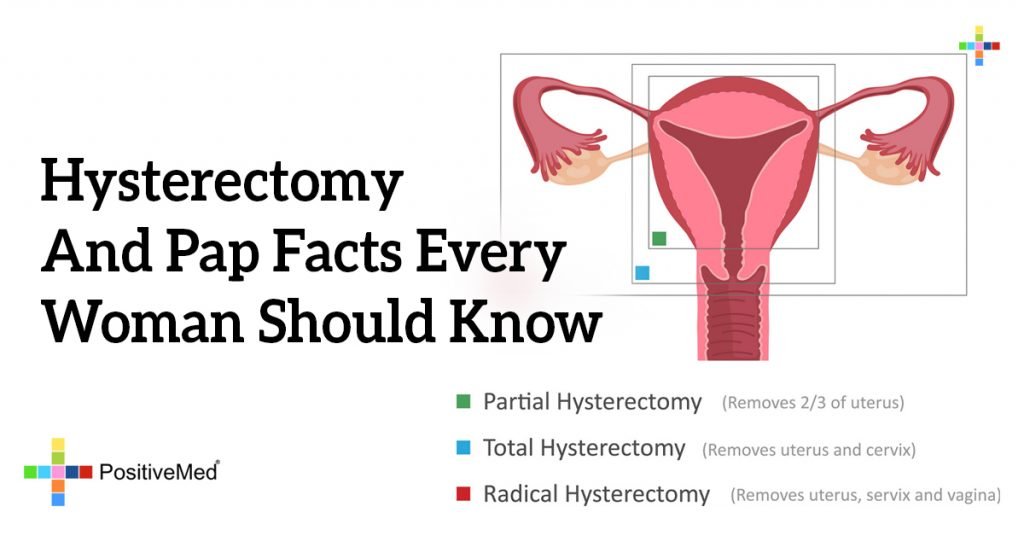
Hysterectomy and Pap Facts Every Woman Should Know
A hysterectomy is a procedure that includes the complete removal of a woman’s uterus. More than 590,000 women in the United States have to resort to getting hysterectomies each year. The following is some information for women who are considering a hysterectomy. It can also help the friends and family members of such women.
Common Reasons for Hysterectomy
A number of painful medical conditions result in a doctor’s recommendation for a hysterectomy. Uterine fibroids are the top reason that women have their uterus removed. Fibroids are inconvenient and sometimes painful abnormal growths that grow inside of the uterus. They can cause a heap of problems such as irregular bleeding, abdominal cramps and more. A woman may get a hysterectomy because of the pain or because one of the fibroids is malignant.
The second most common reason that women have a hysterectomy procedures done is endometriosis. Endometriosis is another painful condition in which the sufferer has extreme abdominal pain. The third reason that a woman may get a hysterectomy done is full-blown cervical cancer. Another condition that may end with the woman getting a hysterectomy is a uterine prolapse. Uterine prolapse is a condition in which the person’s uterus shifts positions and ends up partially in the vagina.
Types of Hysterectomies
Several types of hysterectomies exist. A woman and her physician decide on the type of procedure that she gets depending on her condition. The two main types of hysterectomies that women get are partial and full hysterectomies. The full hysterectomy includes the removal of the ovaries and the cervix while the partial hysterectomy leaves the cervix in place. The partial hysterectomy has several benefits such as a stronger architecture and greater closeness enjoyment between the female and her spouse. Another type of hysterectomy that a woman may have is a radical hysterectomy. In a radical hysterectomy, the doctor removes the person’s uterus, cervix and entire upper part of the vagina.
The Hysterectomy Process
The specialist will use a number of tools to perform the hysterectomy. The first thing that the patient will do when she enters the medical facility takes some tests, get dressed for the occasion and receive her antibiotics. The specialist gives patients antibiotics so they will not develop an infection after they get a hysterectomy done.
RELATED ARTICLE: Endometriosis, A Few Facts
The actual hysterectomy procedure involves a cut in either the vagina or the abdomen. The doctor decides which way he will access the uterus. Specialists usually remove the uterus through the vagina in cases such as uterine prolapse and cervical cancer. They use the abdominal access method in situations such as large pelvic tumors and adhesions. The specialist usually makes a bikini-line cut to perform the procedure. The abdominal hysterectomy requires the longest amount of healing time for the women.
The Risk Involved With Hysterectomy
Several risks are involved with hysterectomies other than infections. Women are at risk for blood clots, irregular bleeding, internal injuries and anesthesia complications. However, many of the procedures advance and succeed without any complications.
RELATED ARTICLE: A Rare Reproductive Organs Disorder that Seriously Affects a Woman’s Life
Healing After a Hysterectomy
Recovery after a hysterectomy usually takes six to eight weeks. The doctors prescribe antibiotics and pain medication. The patient can slowly increase her activities after that time. She should conduct no heavy lifting or vigorous activities because such activities pose the risk of reopening the wounds. The demanding activities should cease until she has reached the 12th week of recovery.
The female’s life is going to be different after her hysterectomy. She may experience moods swings because of the hormonal changes that occur after a hysterectomy. She will not be able to have children, and she will no longer have a menstrual period. She will need support from friends and family members so she can transition into her new life.
The Necessity of Getting Regular Pap Smears
Pap smears have become an integral part of women’s health, and for good reason. Pap smears can pinpoint conditions that detect cervical cancer in its early stages. The pap smear is a yearly exam during which the doctor conducts several types of tests. The first type of test that the doctor performs is the physical examination. He or she examines the cervix and the vaginal walls to look for abnormal growths and tumors. The other part of the pap smear includes the use of a speculum and a long cotton swab. The doctor opens the vagina with the speculum and then swipes the vaginal walls with the cotton swab. The sample then goes to a lab for analysis, and the doctor lets the patient know if abnormal cells are apparent.
All women who are over the age of 21 should have a pap smear performed at least once every year. A woman should get a pap smear before and after surgery to decrease the progression of cervical cancer. Pap smears are inexpensive, and they do not take long to perform. The best thing about them is that they can save lives and possibly prevent the need for a hysterectomy.





